Chrysler 2012 Annual Report Download - page 44
Download and view the complete annual report
Please find page 44 of the 2012 Chrysler annual report below. You can navigate through the pages in the report by either clicking on the pages listed below, or by using the keyword search tool below to find specific information within the annual report.-
 1
1 -
 2
2 -
 3
3 -
 4
4 -
 5
5 -
 6
6 -
 7
7 -
 8
8 -
 9
9 -
 10
10 -
 11
11 -
 12
12 -
 13
13 -
 14
14 -
 15
15 -
 16
16 -
 17
17 -
 18
18 -
 19
19 -
 20
20 -
 21
21 -
 22
22 -
 23
23 -
 24
24 -
 25
25 -
 26
26 -
 27
27 -
 28
28 -
 29
29 -
 30
30 -
 31
31 -
 32
32 -
 33
33 -
 34
34 -
 35
35 -
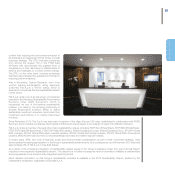 36
36 -
 37
37 -
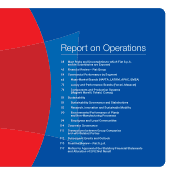 38
38 -
 39
39 -
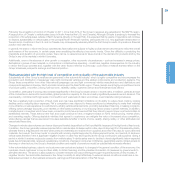 40
40 -
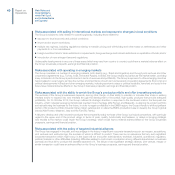 41
41 -
 42
42 -
 43
43 -
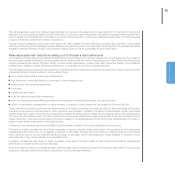 44
44 -
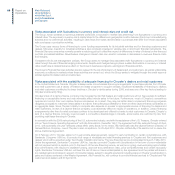 45
45 -
 46
46 -
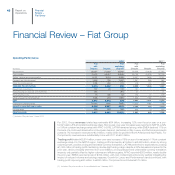 47
47 -
 48
48 -
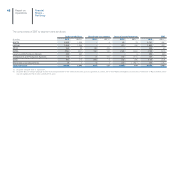 49
49 -
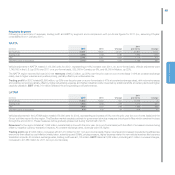 50
50 -
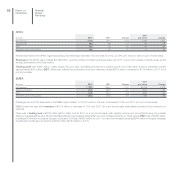 51
51 -
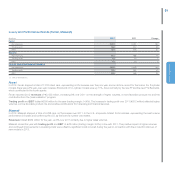 52
52 -
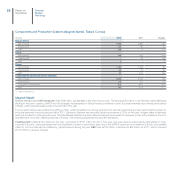 53
53 -
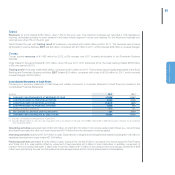 54
54 -
 55
55 -
 56
56 -
 57
57 -
 58
58 -
 59
59 -
 60
60 -
 61
61 -
 62
62 -
 63
63 -
 64
64 -
 65
65 -
 66
66 -
 67
67 -
 68
68 -
 69
69 -
 70
70 -
 71
71 -
 72
72 -
 73
73 -
 74
74 -
 75
75 -
 76
76 -
 77
77 -
 78
78 -
 79
79 -
 80
80 -
 81
81 -
 82
82 -
 83
83 -
 84
84 -
 85
85 -
 86
86 -
 87
87 -
 88
88 -
 89
89 -
 90
90 -
 91
91 -
 92
92 -
 93
93 -
 94
94 -
 95
95 -
 96
96 -
 97
97 -
 98
98 -
 99
99 -
 100
100 -
 101
101 -
 102
102 -
 103
103 -
 104
104 -
 105
105 -
 106
106 -
 107
107 -
 108
108 -
 109
109 -
 110
110 -
 111
111 -
 112
112 -
 113
113 -
 114
114 -
 115
115 -
 116
116 -
 117
117 -
 118
118 -
 119
119 -
 120
120 -
 121
121 -
 122
122 -
 123
123 -
 124
124 -
 125
125 -
 126
126 -
 127
127 -
 128
128 -
 129
129 -
 130
130 -
 131
131 -
 132
132 -
 133
133 -
 134
134 -
 135
135 -
 136
136 -
 137
137 -
 138
138 -
 139
139 -
 140
140 -
 141
141 -
 142
142 -
 143
143 -
 144
144 -
 145
145 -
 146
146 -
 147
147 -
 148
148 -
 149
149 -
 150
150 -
 151
151 -
 152
152 -
 153
153 -
 154
154 -
 155
155 -
 156
156 -
 157
157 -
 158
158 -
 159
159 -
 160
160 -
 161
161 -
 162
162 -
 163
163 -
 164
164 -
 165
165 -
 166
166 -
 167
167 -
 168
168 -
 169
169 -
 170
170 -
 171
171 -
 172
172 -
 173
173 -
 174
174 -
 175
175 -
 176
176 -
 177
177 -
 178
178 -
 179
179 -
 180
180 -
 181
181 -
 182
182 -
 183
183 -
 184
184 -
 185
185 -
 186
186 -
 187
187 -
 188
188 -
 189
189 -
 190
190 -
 191
191 -
 192
192 -
 193
193 -
 194
194 -
 195
195 -
 196
196 -
 197
197 -
 198
198 -
 199
199 -
 200
200 -
 201
201 -
 202
202 -
 203
203 -
 204
204 -
 205
205 -
 206
206 -
 207
207 -
 208
208 -
 209
209 -
 210
210 -
 211
211 -
 212
212 -
 213
213 -
 214
214 -
 215
215 -
 216
216 -
 217
217 -
 218
218 -
 219
219 -
 220
220 -
 221
221 -
 222
222 -
 223
223 -
 224
224 -
 225
225 -
 226
226 -
 227
227 -
 228
228 -
 229
229 -
 230
230 -
 231
231 -
 232
232 -
 233
233 -
 234
234 -
 235
235 -
 236
236 -
 237
237 -
 238
238 -
 239
239 -
 240
240 -
 241
241 -
 242
242 -
 243
243 -
 244
244 -
 245
245 -
 246
246 -
 247
247 -
 248
248 -
 249
249 -
 250
250 -
 251
251 -
 252
252 -
 253
253 -
 254
254 -
 255
255 -
 256
256 -
 257
257 -
 258
258 -
 259
259 -
 260
260 -
 261
261 -
 262
262 -
 263
263 -
 264
264 -
 265
265 -
 266
266 -
 267
267 -
 268
268 -
 269
269 -
 270
270 -
 271
271 -
 272
272 -
 273
273 -
 274
274 -
 275
275 -
 276
276 -
 277
277 -
 278
278 -
 279
279 -
 280
280 -
 281
281 -
 282
282 -
 283
283 -
 284
284 -
 285
285 -
 286
286 -
 287
287 -
 288
288 -
 289
289 -
 290
290 -
 291
291 -
 292
292 -
 293
293 -
 294
294 -
 295
295 -
 296
296 -
 297
297 -
 298
298 -
 299
299 -
 300
300 -
 301
301 -
 302
302 -
 303
303 -
 304
304 -
 305
305 -
 306
306 -
 307
307 -
 308
308 -
 309
309 -
 310
310 -
 311
311 -
 312
312 -
 313
313 -
 314
314 -
 315
315 -
 316
316 -
 317
317 -
 318
318 -
 319
319 -
 320
320 -
 321
321 -
 322
322 -
 323
323 -
 324
324 -
 325
325 -
 326
326 -
 327
327 -
 328
328 -
 329
329 -
 330
330 -
 331
331 -
 332
332 -
 333
333 -
 334
334 -
 335
335 -
 336
336 -
 337
337 -
 338
338 -
 339
339 -
 340
340 -
 341
341 -
 342
342 -
 343
343 -
 344
344 -
 345
345 -
 346
346
 |
 |

43
Report on Operations
The rating agencies review their ratings at least annually and, as such, the assignment of new ratings to Fiat during 2013 cannot be
excluded. It is not currently possible to predict the timing or outcome of any rating review. Any further downgrade may increase Fiat’s
cost of capital and potentially limit its access to sources of financing with a consequent material adverse effect on Fiat’s business
prospects, financial condition and results of operations.
Chrysler has been assigned a corporate credit rating of B1 (with a stable outlook) by Moody’s Investors Service and B+ (with a stable
outlook) by Standard & Poor’s Ratings Services. Because Chrysler has a lower corporate credit rating than Fiat, it is possible that further
integration between Fiat and Chrysler could result in a rating review of Fiat and potentially a lower credit rating.
Risks associated with restrictions arising out of Chrysler’s debt instruments
In connection with the refinancing transactions finalized at the end of May 2011, Chrysler entered into a credit agreement for the senior
secured credit facilities (including a revolving facility) and an indenture for two series of secured senior notes. These debt instruments
include covenants that restrict Chrysler’s ability to make certain distributions, prepay other debt, encumber assets, incur additional
indebtedness, engage in certain business combinations, or undertake various other business activities.
The credit agreement governing the senior secured credit facility and the indenture governing the secured senior notes contain restrictive
covenants that limit Chrysler’s ability to, among other things:
incur or guarantee additional secured indebtedness;
pay dividends or make distributions or purchase or redeem capital stock;
make certain other restricted payments;
incur liens;
transfer and sell assets;
enter into sale and lease-back transactions;
enter into transactions with affiliates (as defined in the relevant contractual documents), including Fiat; and
effect a consolidation, amalgamation or certain merger or change of control (except for the acquisition of control by Fiat).
These restrictive covenants could have an adverse effect on Chrysler’s business by limiting its ability to take advantage of financing,
mergers and acquisitions, joint ventures or other corporate opportunities. In addition, the Senior Credit Facilities contain, and future
indebtedness may contain, other and more restrictive covenants and also prohibit Chrysler from prepaying certain of its indebtedness.
The Senior Credit Facilities require Chrysler to maintain borrowing base collateral coverage and a liquidity threshold. A breach of any of
these covenants or restrictions could result in an event of default on the indebtedness and any of the other indebtedness of Chrysler or
result in cross-default under certain of its indebtedness.
Furthermore, the indenture governing the VEBA Trust Note limits the ability of Chrysler’s subsidiaries to incur debt.
If Chrysler is unable to comply with all of these covenants, it may be in default, which could result in the acceleration of its outstanding
indebtedness and foreclosure on mortgaged properties. In this case, Chrysler may not be able to repay its debt and it is unlikely
that it would be able to borrow sufficient additional funds. In any case, even if new financing is made available to Chrysler in such
circumstances, it may not be available on acceptable terms.
In addition, compliance with certain of these covenants could restrict Chrysler’s ability to take certain actions that its management
believes are in Chrysler’s best long-term interests.
Should Chrysler be unable to undertake strategic initiatives due to the covenants provided for by the above instruments, Fiat’s business
prospects, financial condition and results of operations could be adversely affected.
